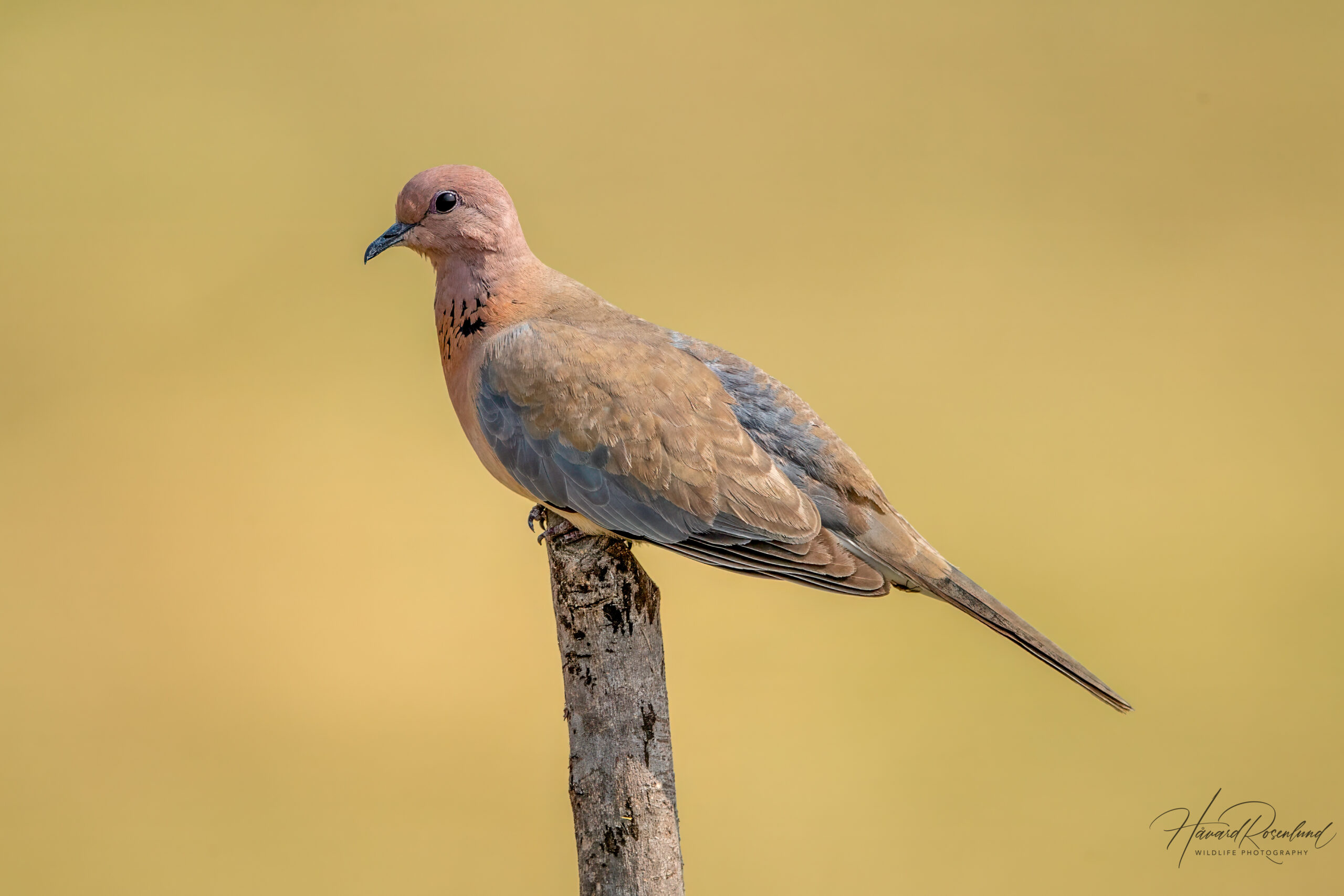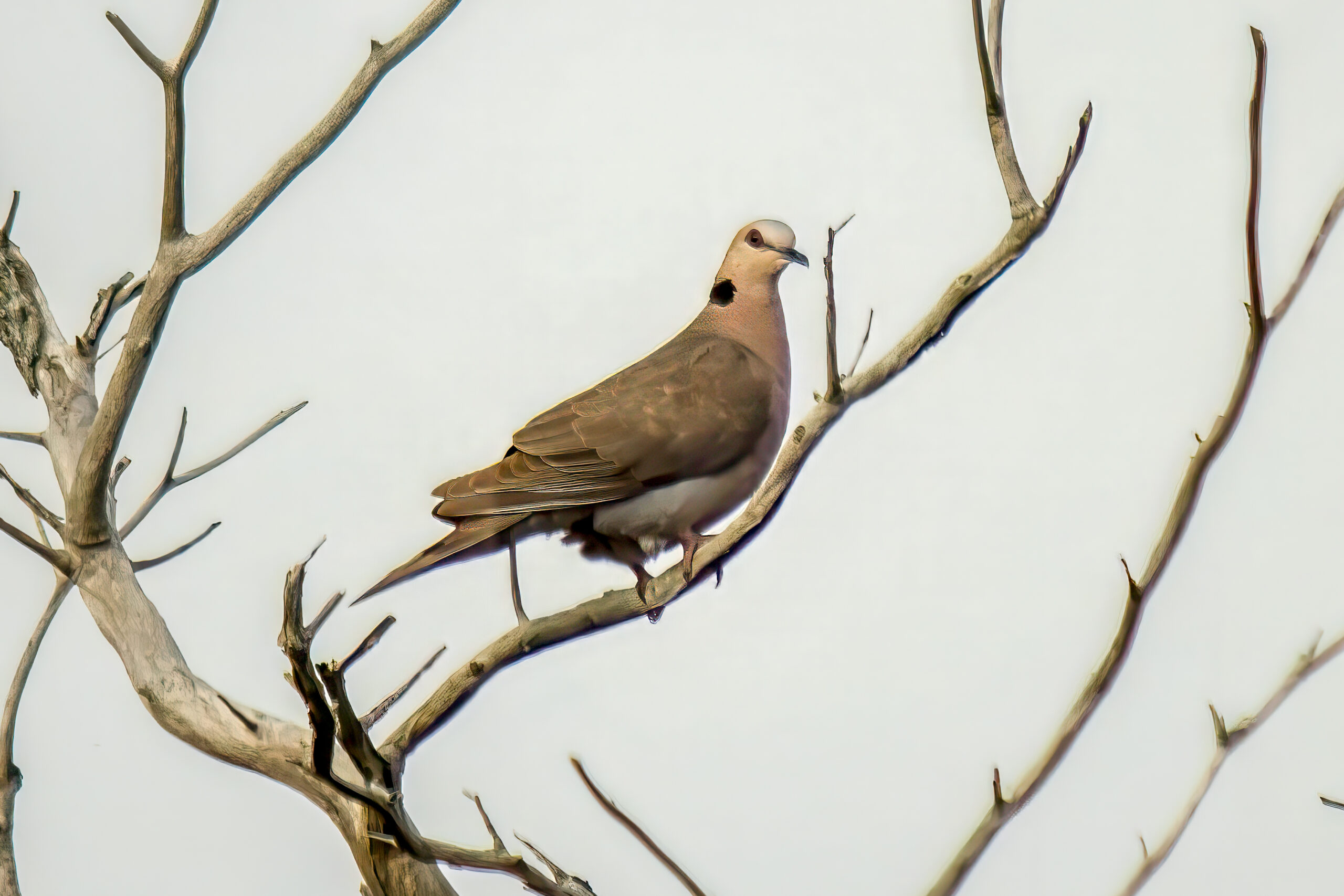Description
The laughing dove (Spilopelia senegalensis) is a small, long-tailed pigeon native to Africa, the Middle East, and the Indian Subcontinent. It is a small, delicately built dove with a length of about 25 to 27 cm (9.8-10.6 in). It boasts a pale, pinkish-brown body, with the underside being particularly soft in hue, transitioning to a whitish belly. The upper body features a lilac to pink wash, while the wings are more reddish brown with grey to steel blue edges. Notable for the speckled rufous pattern around the neck. Its tail is long and tapering with white tips, distinct in flight. It has deep red feet. The laughing dove gets its name from its unique and persistent call, a series of soft cooing sounds that resemble human laughter, often rendered as “coo-coo-coo-coo”.
Diet & habitat
The laughing dove thrives in a variety of habitats from semi-arid areas, agricultural lands, to urban gardens and parks, showing a particular affinity for places where humans reside. This species is predominantly a ground feeder and has a diet consisting mainly of seeds, grains, and occasionally small fruits and invertebrates. Its presence is often noted in open country and farmlands, as well as in cityscapes where it skillfully navigates the human-altered environments, taking full advantage of the readily available water sources.
Nesting
Laughing doves are monogamous and often nest close to human habitation. They build a rather flimsy nest from twigs and grass, usually in trees or shrubs, sometimes even on building ledges. The female typically lays two creamy-white eggs, which both parents incubate for around 14 days. The altricial chicks are fed by both parents and fledge in about 17 days.
Status
The laughing dove has a vast range and a large population that is stable. Due to its adaptability and tolerance to human-altered environments, it is not considered to be at risk. It is listed as least concern on the IUCN Red List.







